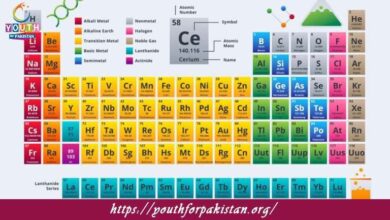12th Class Biology Chapter 20 MCQs with Answers

Unlock the mysteries of Chromosome and DNA with our 12th Class Biology Chapter 20 MCQs. These targeted questions explore DNA replication, structure, and chromosome behavior. Featuring keywords like genetics MCQs, DNA structure quiz, and chromosome biology test, this resource is ideal for board exams and competitive tests.
What is the full form of DNA?
a) Deoxyribonucleic Acid
b) Ribonucleic Acid
c) Deoxyribose Nucleotide Acid
d) Ribose Nucleotide Acid
In humans, how many pairs of chromosomes are there in each somatic cell?
a) 23
b) 46
c) 22
d) 20
Which scientist is credited with the discovery of the structure of the DNA double helix?
a) Rosalind Franklin
b) James Watson
c) Francis Crick
d) Linus Pauling
What is the basic building block of DNA called?
a) Nucleotide
b) Amino Acid
c) Protein
d) Carbohydrate
Which nitrogenous bases are present in DNA?
a) Adenine, Cytosine, Guanine, Thymine
b) Adenine, Cytosine, Guanine, Uracil
c) Adenine, Cytosine, Thymine, Uracil
d) Adenine, Guanine, Thymine, Uracil
The process of making an RNA molecule using a DNA template is called:
a) Translation
b) Transcription
c) Replication
d) Translocation
Which enzyme is responsible for unwinding the DNA double helix during replication?
a) DNA Ligase
b) DNA Polymerase
c) DNA Helicase
d) RNA Polymerase
Which type of bond holds the nitrogenous bases together in the DNA double helix?
a) Covalent Bond
b) Hydrogen Bond
c) Ionic Bond
d) Peptide Bond
In DNA, adenine (
a) always pairs with:
a) Thymine (T)
b) Cytosine (c)
c) Guanine (G) d) Uracil (U)
Which DNA repair mechanism is responsible for fixing incorrectly paired bases after DNA replication?
a) Nucleotide Excision Repair
b) Base Excision Repair
c) Mismatch Repair
d) Homologous Recombination
What is the shape of the DNA molecule?
a) Single helix
b) Double helix
c) Triple helix
d) Quadruple helix
Which process ensures that the genetic information in DNA is passed on to new cells during cell division?
a) Replication
b) Transcription
c) Translation
d) Reproduction
Which of the following is NOT a component of a DNA nucleotide?
a) Phosphate group
b) Deoxyribose sugar
c) Ribose sugar
d) Nitrogenous base
In DNA, guanine (G) always pairs with:
a) Thymine (T)
b) Cytosine (c)
c) Adenine (a)
d) Uracil (U)
Which process converts the information stored in mRNA into a sequence of amino acids to form a protein?
a) Transcription
b) Replication
c) Translation
d) Transduction
Which scientist’s X-ray diffraction data was crucial in discovering the structure of DNA?
a) Rosalind Franklin
b) James Watson
c) Francis Crick
d) Maurice Wilkins
In DNA, cytosine (c) always pairs with:
a) Thymine (T)
b) Adenine (a)
c) Guanine (G)
d) Uracil (U)
The full form of RNA is:
a) Ribonucleic Acid
b) Deoxyribonucleic Acid
c) Ribose Nucleotide Acid
d) Deoxyribose Nucleotide Acid
What is the function of DNA Polymerase during DNA replication?
a) Unwinding the DNA double helix
b) Adding new nucleotides to the growing strand
c) Proofreading and repairing errors in the DNA sequence
d) Initiating the replication process
In DNA, thymine (T) always pairs with:
a) Adenine (a)
b) Cytosine (c)
c) Guanine (G)
d) Uracil (U)
Which type of RNA carries amino acids to the ribosome during protein synthesis?
a) Messenger RNA (mRNA)
b) Transfer RNA (tRNA)
c) Ribosomal RNA (rRNA)
d) Small Nuclear RNA (snRNA)
What is the function of DNA Ligase during DNA replication?
a) Unwinding the DNA double helix
b) Adding new nucleotides to the growing strand
c) Proofreading and repairing errors in the DNA sequence
d) Joining Okazaki fragments on the lagging strand
Which type of RNA carries the genetic information from the DNA to the ribosome for protein synthesis?
a) Messenger RNA (mRNA)
b) Transfer RNA (tRNA)
c) Ribosomal RNA (rRNA)
d) Small Nuclear RNA (snRNA)
Which nitrogenous base is found in RNA but not in DNA?
a) Adenine (a)
b) Cytosine (c)
c) Guanine (G)
d) Uracil (U)
Which enzyme is responsible for adding new nucleotides to the growing strand during
DNA replication?
a) DNA Ligase
b) DNA Polymerase
c) DNA Helicase
d) RNA Polymerase
The process of copying genetic information from DNA to RNA is called:
a) Replication
b) Transcription
c) Translation
d) Mutation
Which of the following is NOT a type of RNA?
a) Messenger RNA (mRNA)
b) Transfer RNA (tRNA)
c) Deoxyribonucleic Acid (DNA)
d) Ribosomal RNA (rRNA)
The process of making a protein using the information encoded in the mRNA is called:
a) Replication
b) Transcription
c) Translation
d) Transduction
What is the function of RNA Polymerase during transcription?
a) Unwinding the DNA double helix
b) Adding new nucleotides to the growing RNA strand
c) Proofreading and repairing errors in the RNA sequence
d) Initiating the transcription process
What is the function of tRNA (Transfer RN
a) during translation?
a) Unwinding the DNA double helix
b) Adding new nucleotides to the growing RNA strand
c) Carrying amino acids to the ribosome for protein synthesis
d) Joining Okazaki fragments on the lagging strand
Which DNA repair mechanism is responsible for fixing damage caused by exposure to ultraviolet (UV) light?
a) Nucleotide Excision Repair
b) Base Excision Repair
c) Mismatch Repair
d) Homologous Recombination
In eukaryotic cells, where is DNA located?
a) Nucleus
b) Cytoplasm
c) Mitochondria
d) Both A and C
Which type of RNA is involved in regulating gene expression by inhibiting translation or degrading mRNA?
a) Messenger RNA (mRNA)
b) Transfer RNA (tRNA)
c) Ribosomal RNA (rRNA)
d) MicroRNA (miRNA)
Which enzyme is responsible for adding new nucleotides to the growing RNA strand during transcription?
a) DNA Ligase
b) DNA Polymerase
c) DNA Helicase
d) RNA Polymerase
What is the function of rRNA (Ribosomal RN
a) during translation?
a) Unwinding the DNA double helix
b) Adding new nucleotides to the growing RNA strand
c) Carrying amino acids to the ribosome for protein synthesis
d) Forming the core structure of ribosomes for protein synthesis
Which nitrogenous base is found in RNA but not in DNA?
a) Adenine
b) Cytosine (c)
c) Guanine (G)
d) Uracil (U)
In RNA, adenine (
a) pairs with:
a) Thymine (T)
b) Cytosine (c)
c) Guanine (G)
d) Uracil (U)
Which DNA repair mechanism is responsible for fixing damage caused by reactive oxygen species and other small lesions?
a) Nucleotide Excision Repair
b) Base Excision Repair
c) Mismatch Repair
d) Homologous Recombination
Which type of RNA is involved in the splicing of exons to form mature mRNA before translation?
a) Messenger RNA (mRNA)
b) Transfer RNA (tRNA)
c) Ribosomal RNA (rRNA)
d) Small Nuclear RNA (snRNA)
The enzyme telomerase is involved in maintaining the length of which end of the DNA molecule?
a) 5′ end
b) 3′ end
c) 5′ and 3′ ends
d) None of the above
Which DNA repair mechanism is responsible for fixing double-strand breaks in DNA?
a) Nucleotide Excision Repair
b) Base Excision Repair
c) Homologous Recombination
d) Mismatch Repair
What is the function of telomeres in a DNA molecule?
a) Protect the ends of the chromosome from degradation
b) Initiate DNA replication
c) Repair damaged DNA
d) Regulate gene expression
The enzyme telomerase is most active in which type of cells?
a) Somatic cells
b) Germ cells
c) Cancer cells
d) Both B and C
Which DNA repair mechanism is responsible for fixing DNA damage caused by exposure to ionizing radiation?
a) Nucleotide Excision Repair
b) Base Excision Repair
c) Non-Homologous End Joining
d) Mismatch Repair
Which nitrogenous base is found in DNA but not in RNA?
a) Adenine
b) Cytosine (c)
c) Guanine (G)
d) Thymine (T)
Which enzyme is responsible for adding new nucleotides to the growing RNA strand during transcription?
a) DNA Ligase
b) DNA Polymerase
c) DNA Helicase
d) RNA Polymerase
What is the function of rRNA (Ribosomal RN
a) during translation?
a) Unwinding the DNA double helix
b) Adding new nucleotides to the growing RNA strand
c) Carrying amino acids to the ribosome for protein synthesis
d) Forming the core structure of ribosomes for protein synthesis
Which nitrogenous base is found in RNA but not in DNA?
a) Adenine
b) Cytosine (c)
c) Guanine (G)
d) Uracil (U)
In RNA, adenine pairs with:
a) Thymine (T)
b) Cytosine (c)
c) Guanine (G)
d) Uracil (U)
Which DNA repair mechanism is responsible for fixing damage caused by reactive oxygen species and other small lesions?
a) Nucleotide Excision Repair
b) Base Excision Repair
c) Mismatch Repair
d) Homologous Recombination
Which type of RNA is involved in the splicing of exons to form mature mRNA before translation?
a) Messenger RNA (mRNA)
b) Transfer RNA (tRNA)
c) Ribosomal RNA (rRNA)
d) Small Nuclear RNA (snRNA)
The enzyme telomerase is involved in maintaining the length of which end of the DNA molecule?
a) 5′ end
b) 3′ end
c) 5′ and 3′ ends
d) None of the above
Which DNA repair mechanism is responsible for fixing double-strand breaks in DNA?
a) Nucleotide Excision Repair
b) Base Excision Repair
c) Homologous Recombination
d) Mismatch Repair
What is the function of telomeres in a DNA molecule?
a) Protect the ends of the chromosome from degradation
b) Initiate DNA replication
c) Repair damaged DNA
d) Regulate gene expression
The enzyme telomerase is most active in which type of cells?
a) Somatic cells
b) Germ cells
c) Cancer cells
d) Both B and C
Which DNA repair mechanism is responsible for fixing DNA damage caused by exposure to ionizing radiation?
a) Nucleotide Excision Repair
b) Base Excision Repair
c) Non-Homologous End Joining
d) Mismatch Repair
Which nitrogenous base is found in DNA but not in RNA?
a) Adenine
b) Cytosine (c)
c) Guanine (G)
d) Thymine (T)
If you are interested to enhance your knowledge regarding Physics, Chemistry, Biology, and Computer please click on the link of each category, you will be redirected to dedicated website for each category.





